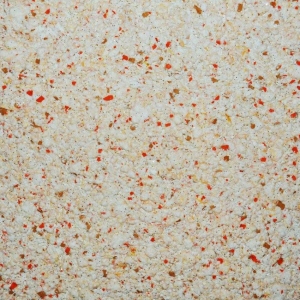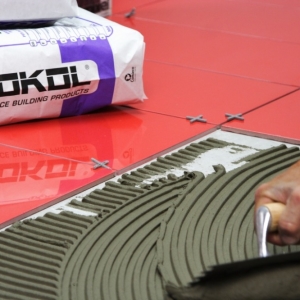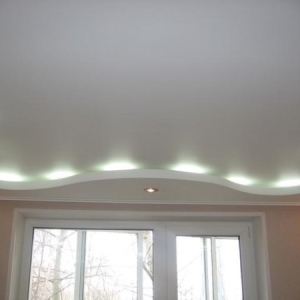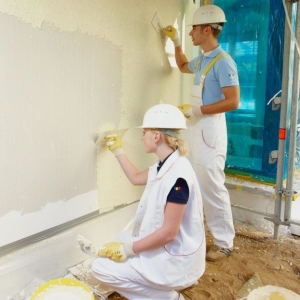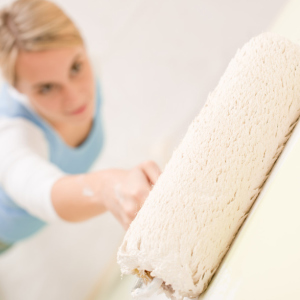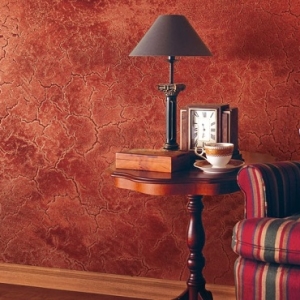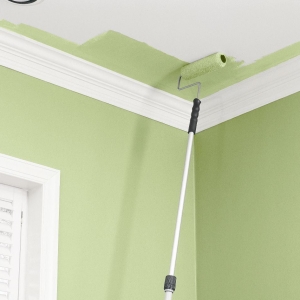Primer composition is a faithful assistant in preparing the basis for further finishing. It is he who becomes the first layer of multi-layer coating that is responsible for the quality of all work, regardless of which finishing material you plan to use - paint, enamel, tile, wallpaper, or plaster. In any case, you will achieve a positive result if you learn to correctly apply primer on the base.
The primer composition is customary to use in such cases:- The primer is needed for additional strengthening, improving the surface adhesion with a tile, coloring composition or wallpaper, since otherwise the finish coating will not last long, will disappear, cracks will appear, mold and fungus.
- It contributes to strengthening loose and raging bases, aligning small irregularities.
- When using the soil, the flow rate of the finishing material is reduced if it concerns porous surfaces.
- With the help of primer are removed from the walls of dust remnants.
- The primer composition promotes the protection of the bases from bubbles, spots, craters, if you prefer the paint or plaster as a finishing material.
- The soil reduces the surface ability, which is constantly exposed to moisture, absorb it.
Depending on the main component, which is included in the primer, they are divided as:
- Mineral. Consist of plaster, lime and cement, suitable for concrete, gas-silicate, brick base, drywall, are used under coating mineral plaster, paint or wallpaper. Drying time - from 2 hours.
- Acrylic. Since acrylic, hidden, forms a solid film on the ground, it will be reliably protected from dampness. It can be used to work with concrete, chipboard, fiberboard, brick, old layers of plaster, glass and cement base. Suitable for wallpaper, water-level paint and enamel. Capable to dry in a couple of hours, odorless.
- Alkyd. They contain phosphate and zinc chromate, so they are inherent in good anti-corrosion properties. They can be handled wood - chipboard, dvp, glass, tile, fiberglass, PVC plastic. But for applying a plasterboard or plastered base, it is categorically prohibited. It will take 12-16 hours for drying.
- Quartz. For the manufacture uses sand. This type of primer is best suited for increasing the adhesion of the base with the finishing material, as the surface is derived.
In addition, you can find glyphthaled, polystyrene, phenolic and polyvinyl acetate primers.

To work, we will need such a tool:
- Roller This is the main fitting, as it is convenient when coating the primer of walls and small on the area of \u200b\u200bvertical surfaces at home.
- Brush. As a rule, with the help of the brush, small areas are treated, namely, the corners, seams. It is also indispensable in the primer of hard-to-reach places.
- Spray. This tool is customary to be used when repairing at the enterprise, or when there is a need to process significant areas. In this case, you will also need the means of individual protection of the respiratory tract of man.
In addition, they will need a large spatula and a container in which the primer is bred.
At the next stage, we are preparing the solution for primer:- The primer composition is poured into the selected dishes.
- When using concentrate, diverse it, adhering to the instructions and the proportions specified in it.
- Recommended proportions are as follows: soil - 2 parts, water - 1 part.
- Remember that the dilute primer should be used only for 1 time, because the next day the substance loses its properties.
- Diluted primer is suitable for processing concrete base under the plaster, it is also applied to putty under the wallpaper. But it is impossible to use on the plaster, which will subsequently will be putty.

- Take the roller and plunge it into the mixture.
- Treat the surface, while the primer should be evenly distributed based on the base.
- With the help of a brush, cover the corners, seams, joints and hard-to-reach places, namely, sites under the windowsill and batteries.
- There should not be non-cross-stacks on the surface. Otherwise, correct it.
- Once again, walking along the wall, waiting until the first layer is dry.
- The finishing layer should also be good to dry, after which you can start further finishing work.
Copper-vigorous primer under the paint (silicate, oil) can be prepared at home alone. For the manufacture you will need: Animal glue (200 g), water in the amount of 10 liters, copper sipop (200 g), economic soap (2.5 kg). For mixing ingredients, a wooden container is used, in which the first to add vitrios, then in such a sequence: soap - glue - water. It remains only to mix well.














